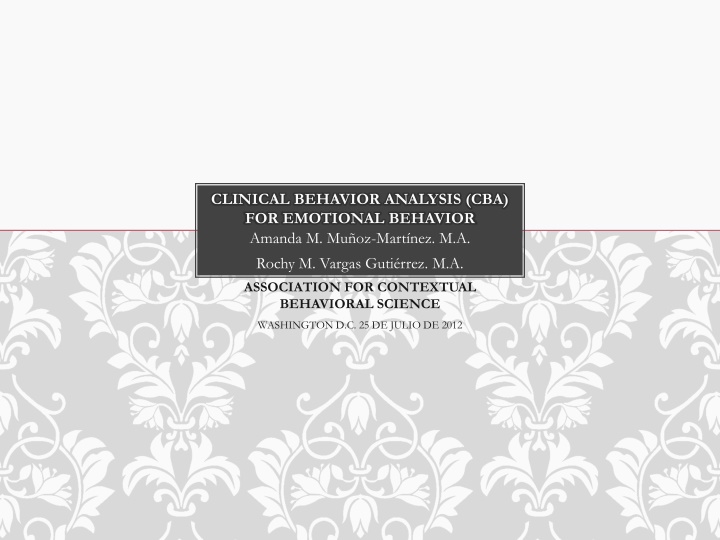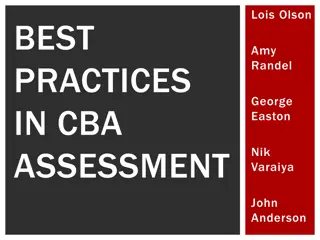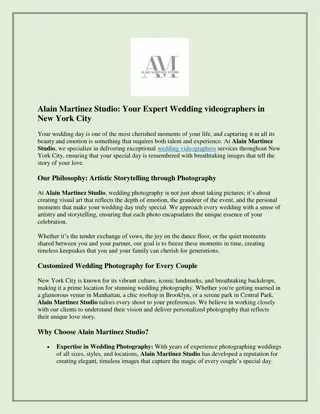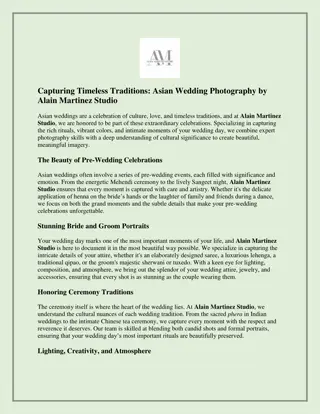
Emotional Behavior with Clinical Behavior Analysis (CBA)
Explore the role of Clinical Behavior Analysis (CBA) in addressing emotional behavior, focusing on relational derived behavior, respondent behavior, and operant behavior. Discover strategies for emotional behavior modification and learn how emotional problems are tackled in clinical settings. Delve into the connection between verbal behavior and emotional responses through Relational Frame Theory (RFT), highlighting the transformation of stimulus function and emotional function acquisition.
Download Presentation

Please find below an Image/Link to download the presentation.
The content on the website is provided AS IS for your information and personal use only. It may not be sold, licensed, or shared on other websites without obtaining consent from the author. If you encounter any issues during the download, it is possible that the publisher has removed the file from their server.
You are allowed to download the files provided on this website for personal or commercial use, subject to the condition that they are used lawfully. All files are the property of their respective owners.
The content on the website is provided AS IS for your information and personal use only. It may not be sold, licensed, or shared on other websites without obtaining consent from the author.
E N D
Presentation Transcript
CLINICAL BEHAVIOR ANALYSIS (CBA) FOR EMOTIONAL BEHAVIOR Amanda M. Mu oz-Mart nez. M.A. Rochy M. Vargas Guti rrez. M.A. ASSOCIATION FOR CONTEXTUAL BEHAVIORAL SCIENCE WASHINGTON D.C. 25 DE JULIO DE 2012
EMOTION AND BEHAVIORISM Focus on relational derived behavior (VB-Emotional function) Focus on respondent behavior Focus on operant behavior (non arbitrary relations)
EMOTION IN BEHAVIOR THERAPIES Behavior modification and ABA: Strategies to modify direct contingencies CBA: Strategies to transform the stimulus function CBT: Strategies to modify intervening variables (thoughts)
CBA AND EMOTION Emotional problems are the main issue for most people in clinical contexts (Friman, Hayes & Wilson, 1998; T rneke, 2010) For instance, anxiety, depression, personality disorders, and borderline personality disorder.
SO EMOTION ONLY INVOLVES RESPONDENT BEHAVIOR WITH PROPIOCEPTIVE AND INTEROCEPTIVE TOPOGRAPHIES Emotional behavior also involves the way in which people talk about respondent behavior, and how they relate this with other contextual cues (Bueno, 2011; Forsyth & Eifert, 1996; P rez-Alvar z, 2004) IS RELATIONAL BEHAVIOR THE KEY?
RELATIONAL FRAME THEORY AND EMOTION Verbal Behavior: Direct contingencies RFT: Derived Relational Responding Could verbal behavior be related with emotional responses? (As proposes-Hayes & Brownstein, 1986-) What happen when people talk about their own experience? How respondent behavior becomes active part of derived responses and affects emotional responding? RELATIONAL FRAME THEORY Mutual entailment Combinatorial entailment Transformation of stimulus function EMOTIONAL FUNCTION ACDQUISITION
RESEARCH ON EMOTIONAL FUNCTION When one member of the relational class acquire novel functions through responding procedures, the function of the other member are transformed (Dougher, Hamilton, Fink & Harrington, 2007). People learn emotional responses by derived relations. For instance, when one member of the relational class is exposed to extinction procedures, the function of the other members of the relational class are transformed (Dougher, Augustons, Markham, Greenway & Wulfert, 1994).
HOWEVER These studies were conducted in controlled settings where the stimuli used were unrelated to the natural environment (p. e., nonsense words) The major part of research about emotional functions have developed with children, and it has interested in learning process. FACTORS IMPLICATED IN MAINTENANCE WITH ADULTS?
UNANSWERED QUESTION ARE: What is the underlying process that explain, how talking about the own experience affects relations with those events and what the individuals do with that experience? What factors are involve in people s history that affect the way they label their own experience? Interaction with one s own experience, can affect all kinds of relationships? (out and in session) RESEARCH TOPICS What factors aid and interfere with identify private experiences?
SO It s important to conduct studies in natural contexts, however, this could be troublesome due to the complexity of design studies that resemble the natural environment (T rneke, 2010) Stimuli in natural context could have several function capacities, so it is difficult to know which function has been transformed or related to stimuli that are in the natural environment. Non arbitrary relations and arbitrary relations might have been trained at the same time NEED TRANSLATIONAL RESEARCH IN CLINICAL BEHAVIOR ANALYSIS ABOUT EMOTION
POSIBLE VENUES ON FUTURE RESEARCH IN NATURAL CONTEXTS WE PROPOSE TO START WITH RESEARCH IN NON CLINICAL CONTEXTS WITH YOUNG ADULTS USING ALTERNATIVE STRATEGIES AND HOW TO COMBINE THEM: SELF REPORTS: it could be useful to record behaviours in vivo, from people about their own experience and contextual factors related with that QUALITATIVE METHODS: methods such as in depth interviews, could help to gain information related with verbal behaviour How they relate the different contextual cues with their respondent behavior and to get information about reinforcement history Ground theory to establish frequent words and types of verbal relations that people use Speech analysis: help to analyze words in context, (component analysis, relate verbal report with dicotomic variables) USE THESE IN CLINICAL CONTEXT PHYSIOLOGICAL MEASURES: take physiological measures when people talk about their behavior in emotional verbal settings and compare this with another verbal context ( neutralcontext ) Use standardized stimulus that are associated with physical experience. Neutral context ( p. e., geometric pictures)
HYPOTHESIS FOR CBA AND THERAPEUTIC RELATIONSHIP People with poor interaction settings have a poor emotional labels. Affects interaction and communication repertories People labelling and evaluating in different a manner their own experience depending on contextual keys and their own history. People can change the manner to label their own experience, but the physiological responses are the same. When people talk about settings that are related with changes in emotional responses this response is altered too.
REFERENCES Bueno, R. (2011). Los eventos privados: del conductismo metodol gico al interconductismo. Universitas Psychologica. 10, 949-962. Dougher, M., Augustons, E., Markham, M., Greenway, D. & Wulfert, E. (1994). The transfer of respondent eliciting and extinction functions through estimulus equivalence classes. Journal of Experimental Behavior Analysis. 62, 331-351. Dougher, M., Hamilton, D., Fink, B., & Harrington, J. (2007).Transformation of the discriminative and eliciting functions of generalized relational stimuli. Journal of Experimental Behavior Analysis. 88, 179-197 Forsyth, J., & Eifert, G. (1996). The language of feeling and the feeling of anxiety: contributions of the behaviorisms toward understanding the function-altering effects of language. The Psychological Record,46 (4), 607-649. Friman, P., Hayes, S., & Wilson, K., (1998) Why behavior analysts should study emotion: the example of anxiety. Journal of Applied Behavior Analysis, 31, 137-156. Hayes, S. & Brownatein, A. (1986). Mentalism, behavior-behavior relations, and a behavior-analytic view of purposes of science. The behavior analyst, 9, 175-190. P rez, M. (2004). Contingencia y Drama. La psicolog a seg n el conductismo. Madrid: Minerva ediciones. (Cap tulo 5: Las emociones desde el punto de vista conductista) T rneke, N. (2010). Learning RFT: an introduction to Relational Frame Theory and its clinical appliactions. USA. New Harbinger Publications, Inc.










